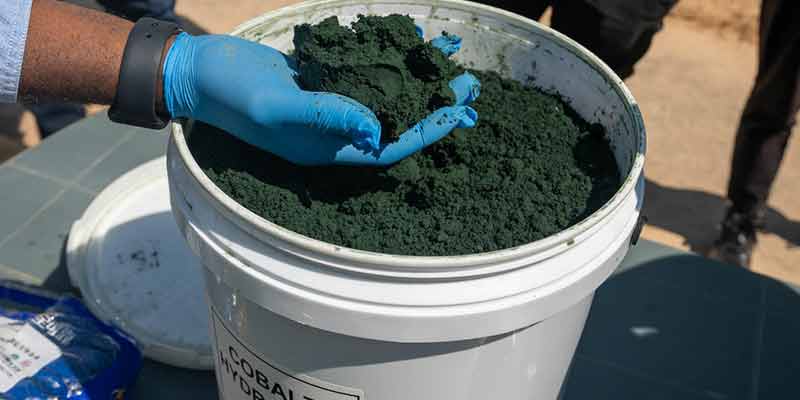- India
- Nov 16
Explainer - What are critical minerals?
• The ministry of mines is in the process of auctioning 20 blocks of critical minerals, including lithium and graphite.
• The 20 critical blocks include lithium and graphite mines.
• Critical minerals have become important for the nation's economic development and national security.
• Lithium and rare earth elements (REEs) have gained significance keeping in mind the country’s commitment towards energy transition and achieving “net-zero” emission by 2070.
• Recently, the government identified a list of critical minerals, including new age minerals like lithium, cobalt and titanium, which are important for meeting the modern needs of cutting-edge technology sectors like electronics, telecom, transport and defence.
• The government has introduced important reforms to open the mining sector for private participation and in particular mineral exploration.
• Last month, the Centre approved royalty rates of 3 per cent each for lithium and niobium and one per cent for rare earth elements (REEs).
What are critical minerals?
• One definition suggests that a mineral is labelled as critical when the risk of supply shortage and associated impact on the economy is higher than the other raw materials.
• They are metals, non-metals and minerals that are considered vital for the economic well-being of the world’s major and emerging economies, yet whose supply may be at risk due to geological scarcity, geopolitical issues, trade policy or other factors.
• Critical minerals are essential for economic development and national security. The lack of availability of these minerals or even concentration of existence, extraction or processing of these minerals in few geographical locations may lead to supply chain vulnerability and disruption.
• The future global economy will be underpinned by technologies that depend on minerals such as lithium, graphite, cobalt, titanium, and rare earth elements (REE).
• Each country has its own classification of raw materials or critical minerals
depending on levels of economic development, industry requirements, national interests and security concerns, technology, market changes and natural resource endowment.
• The most common framework widely adopted for evaluating material criticality is based on a metal’s supply risk and the impact of a supply restriction.
• Critical minerals include rare earth elements (REEs) and platinum-group elements.
Importance of critical minerals
• Critical minerals are the foundation on which modern technology is built. These are essential for the advancement of many sectors, including high-tech electronics, telecommunications, transport, and defence.
• They are also vital to power the global transition to a low carbon emissions economy, and the renewable energy technologies that will be required to meet the “net-zero” commitments of an increasing number of countries around the world.
• From solar panels to semiconductors, wind turbines to advanced batteries for storage and transportation, the world needs critical minerals to build these products.
• Simply put, there is no energy transition without critical minerals, which is why their supply chain resilience has become an increasing priority for major economies.
• India’s future economic prosperity will depend on how well we can use our vast energy and mineral resources to play to our strengths, and how well we can adapt to follow the global market shift towards zero emissions.
• To build competitive value chains in India, the discovery of mineral wealth and identifying areas of its potential by use of advanced technologies is essential.
Identifying the minerals critical to India
• Identification of critical minerals will help the country to plan for the acquisition and preservation of such mineral assets taking into account the long-term need of the country. This will also in turn reduce the import dependency as India is 100 per cent import dependent for certain elements.
• An inter-ministerial committee carried out a three-stage assessment for identifying the minerals critical to India.
• Based on the three-stage assessment process, a total of 30 minerals are found to be most critical for India.
These minerals are:
1) Antimony
2) Beryllium
3) Bismuth
4) Cadmium
5) Cobalt
6) Copper
7) Gallium
8) Germanium
9) Graphite
10) Hafnium
11) Indium
12) Lithium
13) Molybdenum
14) Niobium
15) Nickel
16) Platinum-Group Elements
i) Platinum
ii) Palladium
iii) Rhodium
iv) Ruthenium
v) Iridium
vi) Osmium
17) Phosphorous
18) Potash
19) Rare earth elements (REEs)
i) Lanthanum
ii) Cerium
iii) Praseodymium
iv) Neodymium
v) Promethium
vi) Samarium
vii) Europium
viii) Gadolinium
ix) Terbium
x) Dysprosium
xi) Holmium
xii) Erbium
xiii) Thulium
xiv) Ytterbium
xv) Lutetium
xvi) Scandium
xvii) Yttrium
20) Rhenium
21) Selenium
22) Silicon
23) Strontium
24) Tantalum
25) Tellurium
26) Tin
27) Titanium
28) Tungsten
29) Vanadium
30) Zirconium.
Manorama Yearbook app is now available on Google Play Store and iOS App Store


